© 2025 ALLCITY Network Inc.
All rights reserved.

Going into 2018, it’ll be the third narrative in three tries for Tony Wolters.
In 2016, Wolters was the Cinderella story of the season for the Colorado Rockies. He earned himself a prominent role on a playoff-bound team. Now Wolters is fighting for a spot on the 25-man after a disappointing campaign marred by a concussion and a whole lot of ground balls.
As he enters spring training, the 25-year-old will be vying for the backup catcher spot behind free-agent acquisition Chris Iannetta. Whether it be Wolters or Tom Murphy, the backup catcher is likely to see significant time as Iannetta hasn’t played more than 100 games in a season since 2014. Both options will have to prove their health and production issues of 2017 are in the past.
Wolters is clearly still the favorite to win the backup job and may even still fit in as the long-term option for the Rockies. Yet his 2017 season was telling and the impact that it carried has an effect moving forward.
Let’s break Wolters down into three basic questions: What troubled him? Can he fix it? How huge would that be for his club?
Wolters, the middle-infielder-turned-backstop, was claimed off waivers from the Cleveland Indians just weeks before Spring Training in 2016, never having played a game above Double-A. He earned a spot on the Opening Day roster, where he would remain for the entire season, minus two games with the Triple-A Albuquerque Isotopes on a rehab assignment.
Defensive metrics liked him, with Baseball Prospectus placing his 8.7 framing runs just outside the top 10 in MLB. He swung the bat to a good-not-great .259/.340/.378, but was particularly potent in 27 second-half games, with a .321 average.
He began 2017 on the same note during an early season platoon with Dustin Garneau. In 17 games before May 2, Wolters hit .346 with an OBP just shy of .400. He started 16 of those games, reaching in 14. Sure, the pace was unsustainable. He BABIP’ed .439, hit three grounders for every two fly balls and walked at a rate three percent lower than the rest of the league over that time. Regression was inevitable, but his production to that point was indisputable.
But with what followed Wolters’ concussion on May 2, the regression would’ve been a desirable alternative.
The change didn’t happen immediately, but when he returned from the disabled list two weeks later, he was not the same player. Whether it be prolonged effects of his injury or the disruption of missing two weeks, May 2 was a turning point in the arc of Tony Wolters’ 2017.
Here are the stat lines before and after Wolters’ concussion for the 2017 season:
Pre-concussion

![]()
Credit: Fangraphs
Post-concussion


Credit: Fangraphs
First, the obvious parts.
Wolters saw a dramatic decrease in production, to the tune of a crazy 70-point wRC+ drop. His BABIP came crashing down to Earth so hard that it is a minor miracle there was no major extinction event, thanks to an uptick in soft and medium contact at the expense of, you guessed it, hard contact.
Other changes of note: the weather-ballooning of his groundball percentage that only Willie Mays Hayes could love, the stratospheric GB/FB rate it led to, and the dramatic jump in the rate Wolters pulled the ball.
What happened instantly was the spike in ground ball rate, as he put the ball in the dirt 55 percent of the time in his first month back, while still spraying to left, center and right at an almost equal pace.
The curious part: Wolters’ pull rate was still below the league average by a full percentage point after his concussion. And, to the surprise of very few, Wolters has more in common with DJ LeMahieu than Nolan Arenado. A successful Wolters is one that sprays around the field, more specifically to center and to left, than pulling down the right-field line.
What is remarkably strange is that this is the opposite of his 2016, wherein Wolters’ best production came from turning on the ball.
Here are Wolters’ splits by batted ball location:
Center and Left

Credit: Fangraphs
Pull

Credit: Fangraphs
There’s a lot going on here. First of all, we learn that when going the other way or up the middle, Wolters was essentially the same player from 2016 to 2017, with a drop in power but mostly similar kinds and quality of contact. When his approach was to drive the ball the other way rather than pull it, he was consistent.
But Wolters made his money going to right in 2016, and even in 2017 earned most of his extra base hits by getting around the ball. The issue comes from that GB%, and the 2.7 GPA it would earn in a college course.
This does not appear to stem from a change in approach from opposing pitchers. In fact, pitchers seemed to have not changed their game plan for Wolters much since he first broke in; work him away, keep it low.
Pitch location 2016
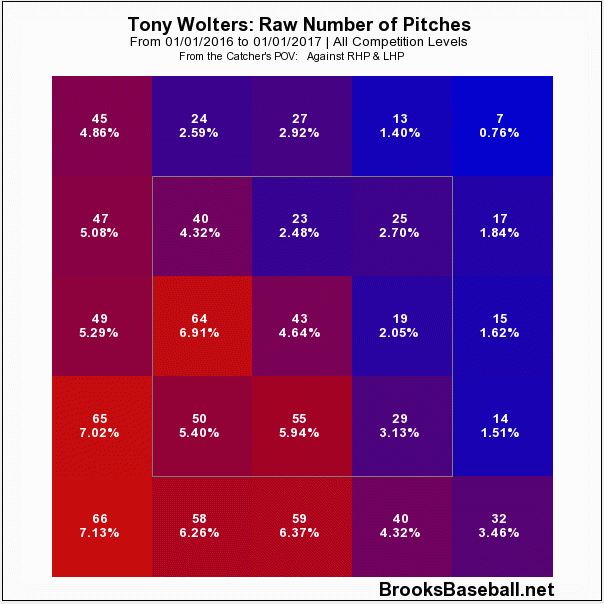
Pitch location pre-concussion 2017
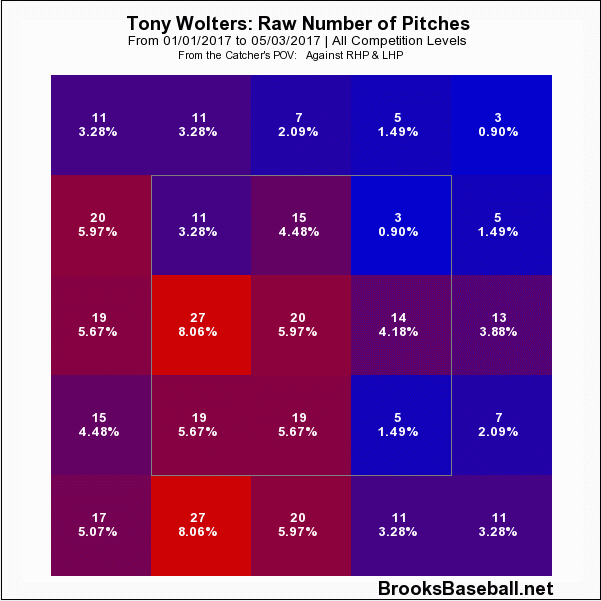
Pitch location post-concussion
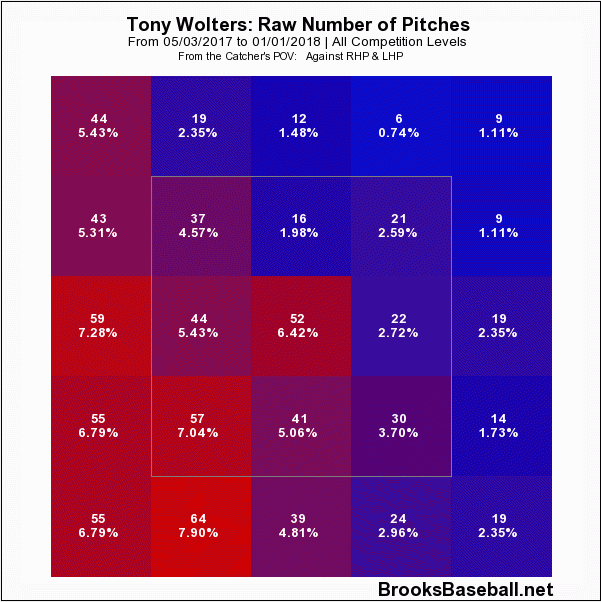
Additionally, the kinds of pitches Wolters faced were fairly consistent throughout the 2017 season. His dosage of fastballs was level while he began to see slightly more breaking pitches at the expense of changeups.
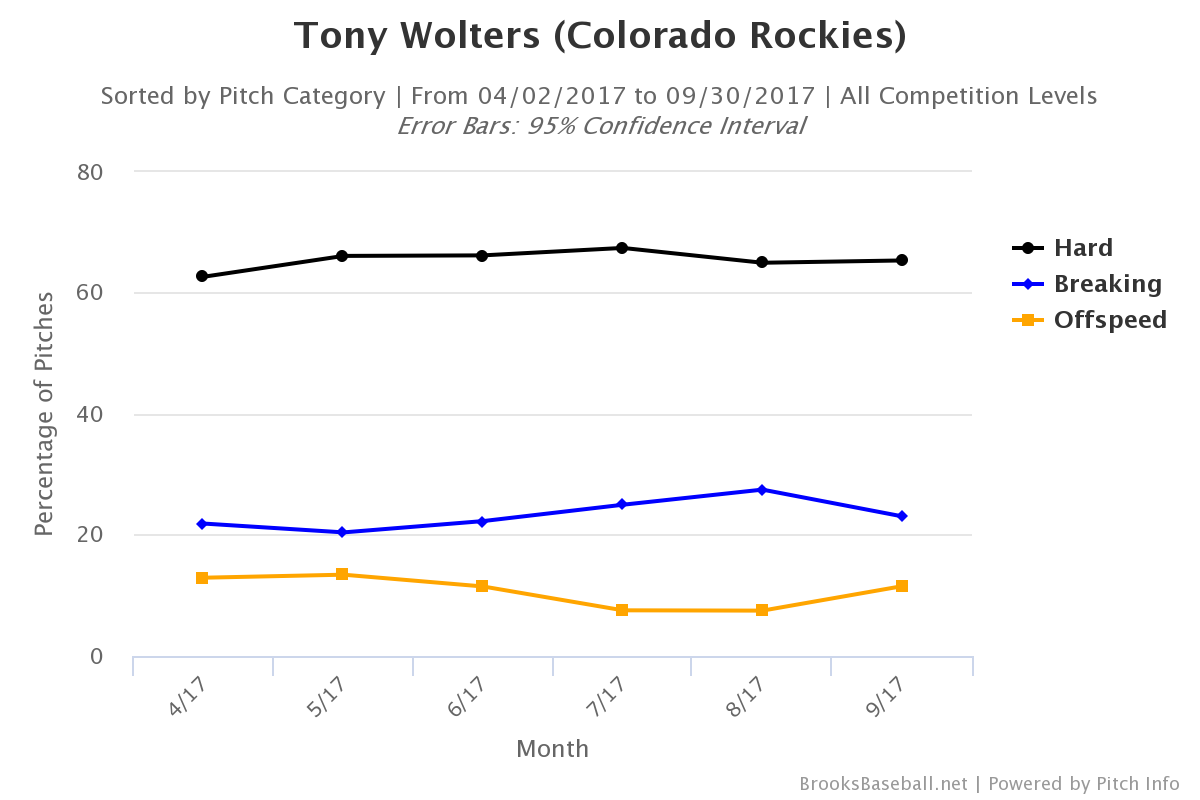
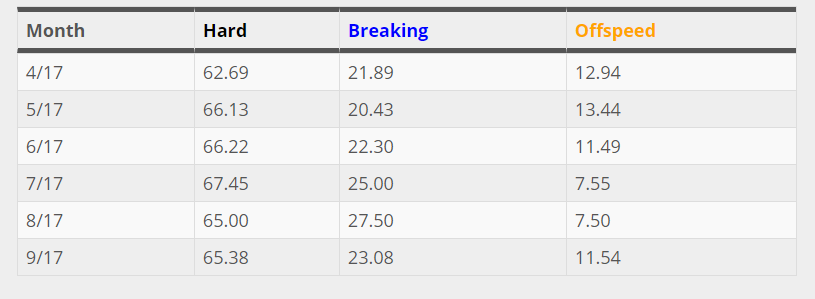
Credit: Brooks Baseball
If the changes weren’t coming from the pitching he faced, it must be his approach to those pitches.
After coming out of the gates so strongly, it may have been that once Wolters stopped seeing success after returning from injury, he tried to pull the ball more to get more bat speed behind his swings. That approach may have turned this:
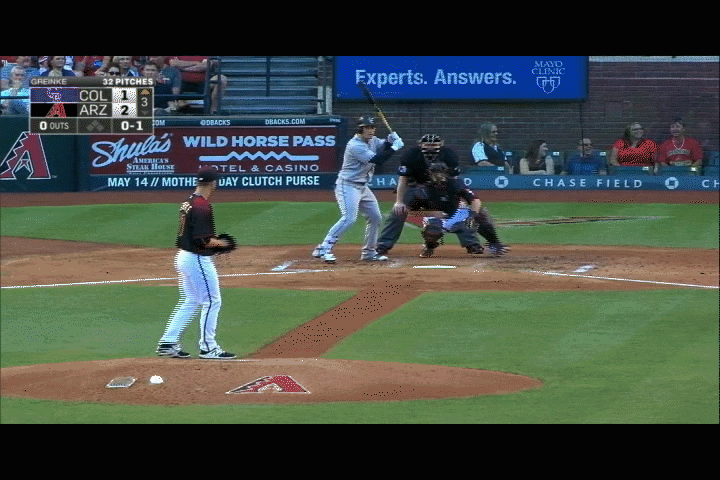
Credit: MLB.tv
Into this:
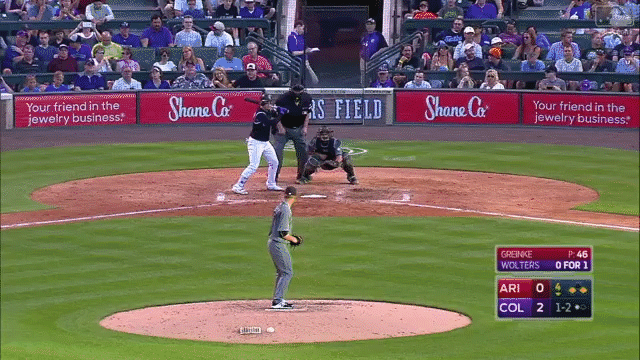
Credit: Baseball Savant
The first clip is a changeup on the outside edge that Wolters waited for and pushed back up the middle on April 29, three days before his concussion. The second is roughly six weeks later, on June 21. He jumps ahead of a slider, again on the outside, and yanks it straight into the dirt for a double play. It’s simply what happens when you try to take those outside offspeed pitches to right: you get rollovers.
Whether it was lingering effects of his head injury or a change in approach induced by losing his pace, Tony Wolters post-May 2 became a pulling grounders machine, instead of the spray hitter that found success from late 2016 into early 2017.
As he figures to compete with Murphy for the backup spot behind Iannetta on a Rockies team that has divisional hopes, Wolters will have to prove that the kinks of his sophomore campaign have been worked out. But this slight adjustment could pay massive dividends for a team looking to extend its lineup to support their dynamic pitching staff.
Comments
Share your thoughts
Join the conversation



